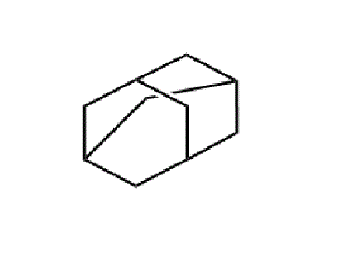English Synonyms
Tricyclo[3.3.1.1]decane;tricyclo[3.3.1.13,7]decane;tricyclodecane;[6]diadamantane;3,5,1,7-[1,2,3,4]butanetetraylnaphthalene,Decahydro-;adamantan;decahydro-3,5,1,7-[1,2,3,4]butanetetraylnaphthalene;tricyclo(3,3,1,1,3,7)-Decane
Adamantane Properties
| Melting point | 209-212 °C (subl.) (lit.) |
| Boiling Point | 185.55°C (rough estimate) |
| Density | 1,07 g/cm3 |
| Refractive Index | 1.5680 |
| Storage conditions | Store below +30°C. |
| Solubility | The solubility in water is 0.00021g/l, slightly soluble |
| Form | Crystals or crystalline powder |
| Proportion | 1.07 |
| Color | White to beige |
| Water solubility | Insoluble in water. |
Features
(1) Very stable to light;
(2) Good lubricity;
(3) Extremely lipophilic;
(4) Almost odorless, a sublimate;
(5) Although its reactivity is not as good as benzene, it is very easy to synthesize its derivatives.
Chemical properties of adamantane
Adamantane is a colorless crystal, soluble in organic solvents, insoluble in water, sublimable, and has a camphor smell. Its structure is highly symmetrical, the molecules are nearly spherical, can be densely packed in the crystal lattice, and are easy to crystallize; it has high volatility and chemical inertness.
Uses
Mainly used in the synthesis of special drugs such as anticancer and antitumor. It can also be used to prepare advanced lubricants, photographic photosensitive material surfactants, pesticides, catalysts, etc. The hydrogen on its bridgehead carbon atoms (i.e. 1, 3, 5, 7) is prone to substitution reactions. For example, adamantane reacts with excess bromine to generate 1-bromoadamantane; reacts with nitrogen dioxide at 175°C to generate 1-nitroadamantane; and is oxidized with chromium trioxide and acetic acid to generate 1-adamantanol. Adamantane can also be prepared by isomerization of tetrahydrodicyclopentadiene in the presence of anhydrous aluminum chloride. Its derivatives can be used as drugs, such as 1-aminoadamantane hydrochloride and 1-adamantylethylamine hydrochloride, which can prevent and treat influenza caused by A2 virus.
Uses
Adamantane is used to synthesize adamantane derivatives. It is often used as a drug intermediate, and can also be used as a raw material for photosensitive materials; epoxy resin curing agent; intermediate for cosmetics and surfactants, etc.
Uses
Used in the production and synthesis of pharmaceutical intermediates; pesticide intermediates; veterinary intermediates; rubber and photosensitive materials; information technology. Adamantane is a cyclic tetrahedral hydrocarbon containing 10 carbon atoms and 16 hydrogen atoms. Its basic structure is chair-shaped cyclohexane. It is a highly symmetrical and very stable compound. Adamantane has the following characteristics: (1) Very stable to light; (2) Good lubricity; (3) Extremely lipophilic; (4) Basically odorless and a sublimate; (5) Although its reactivity is not as good as benzene, it is very easy to synthesize its derivatives.
Uses
A cyclic tetrahedral hydrocarbon containing 10 carbon atoms and 16 hydrogen atoms, its basic structure is chair-shaped cyclohexane, it is a highly symmetrical and very stable compound. It is very stable to light, has good lubricity, is extremely oleophilic, has almost no odor, and is a sublime; although its reactivity is not as good as benzene, it is very easy to synthesize its derivatives.
Production method
Adamantane exists in petroleum, with a content of about 4 parts per million. Adamantane can be obtained by catalytic hydrogenation of dicyclopentadiene to obtain tetrahydrodicyclopentadiene, and then isomerization in the presence of anhydrous aluminum chloride. The process is as follows 1. Catalytic hydrogenation Add dicyclopentadiene and nickel catalyst into an autoclave, and replace the air in the autoclave with nitrogen. Then start stirring and hydrogenation reaction. The pressure in the first half of the stage is 0.5-0.7MPa, and the pressure in the second half of the stage is 1.5-2MPa. The temperature is 120℃, and it takes about 12h until no hydrogen is absorbed. Let it stand for 3-4h, separate into layers, take samples for testing, and the olefin content should be less than 2%. 2. Isomerization Add tetrahydrodicyclopentadiene into a dry glass-lined tank, then add anhydrous aluminum chloride, keep warm at 35℃, and stir to dissolve. Add water dropwise within 3 hours and gradually increase the temperature to 75°C. After reacting for 5 hours, cool the temperature to 40°C, add water to destroy the aluminum chloride, start steam distillation, collect the evaporated adamantane, filter and dry, and wash with a small amount of acetone to obtain adamantane.


